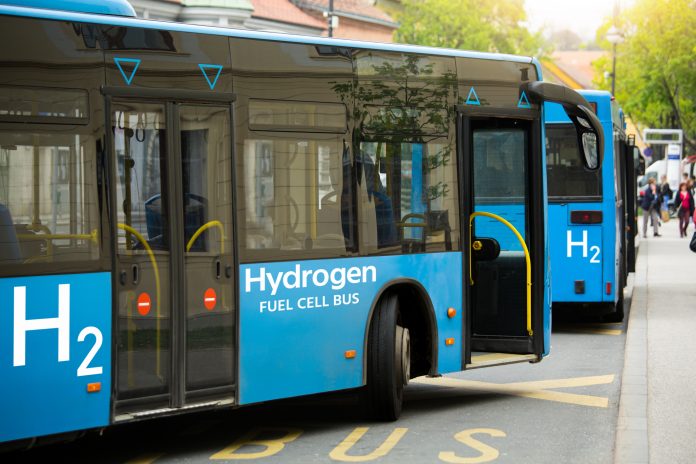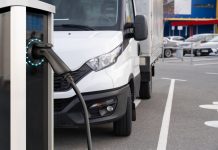Professor Aoife Foley, Chair of Net Zero Infrastructure at The University of Manchester, discusses how hydrogen is the missing piece in the clean and eco-friendly transportation puzzle
Clean hydrogen provides a zero-emissions alternative to fossil fuels. Its high energy density and adaptability are crucial for various sectors, including transportation. Hydrogen’s versatility is also key in achieving a sustainable energy transition and reaching national targets.
The UK seeks to achieve net zero emissions by 2050, and hydrogen will play a crucial role in its energy mix. The goal is to have a production capacity of 10GW of low-carbon hydrogen by 2030. Hydrogen is especially important in hard-to-decarbonise sectors like heavy industry and transportation, where relying solely on electricity is not practical, leading to a greater demand for hydrogen power.
The UK Government is actively backing hydrogen development through various projects, such as the £5.1 million RECYCLE initiative, which aims to demonstrate a hydrogen production unit that employs chemical looping reforming and incorporates carbon capture mechanisms.
Meanwhile, in the heavy : sector, the Hydrogen Aggregated UK Logistics (HyHAUL) project, led by green energy company Protium, plans to deploy 30 hydrogen fuel cell HGVs along the M4 corridor by 2026 and expand to 300 by 2030.
Initiatives such as RECYCLE and HyHAUL emphasise the UK Government’s strategic investments in R&I activities as part of its Hydrogen Strategy.
In pursuit of sustainability: Eco-friendly transportation
While the UK’s strategy focuses on developing its own hydrogen economy, the EU Green Deal has a similar approach: both aim for sustainable energy transitions and climate neutrality. This provides opportunities for collaboration and innovation between the UK and the EU.
This is where the ‘Study on hydrogen in ports and industrial coastal areas’ boasts potential. The initiative aims to bring together European port representatives to drive forward the adoption of hydrogen, encouraging exchange, connectivity, and a long-term perspective on hydrogen uptake.
One approach to making this port initiative a reality is developing hydrogen interconnectors, linking UK production and storage facilities with global markets and facilitating seamless hydrogen trade. This not only strengthens the UK’s hydrogen economy but also enhances international supply chains, positioning the UK as a pivotal hub in the rapidly expanding global hydrogen market.
Hydrogen interconnectors can significantly enhance international collaboration in the transport sector. By establishing cross-border infrastructure, countries can cooperate more effectively, facilitating the exchange of renewable energy for transportation. This collective effort accelerates advancements toward carbon-neutral transport systems and fosters a united front in tackling climate change.
Developing a roadmap
The Study on hydrogen in ports and industrial coastal areas forms a crucial part of the ambitious ‘European Hydrogen Ports Roadmap’. However, to bring this vision to life, several key priorities must be addressed to ensure its successful development and implementation.
Along with establishing hydrogen interconnectors to connect European production and storage facilities, which helps enhance long-term energy security, the industry must also invest in developing pipelines and electrolyser capacity for hydrogen production and transportation. There should also be investment to improve hydrogen production, storage, and fuel cell efficiency, reducing costs and improving reliability.
Furthermore, regulatory frameworks must be modernised to accommodate hydrogen’s unique characteristics. It is crucial to ensure robust safety standards, seamless interoperability across diverse systems, and enhanced market competitiveness. Additionally, cross-border trade regulations should be streamlined to facilitate fair market access for hydrogen, thereby promoting sustainability on a global scale.
Sharing information and knowledge globally will also promote best practices in hydrogen production and distribution, encouraging collaboration for a sustainable hydrogen market. A prime example of this is the HI-ACT Project, which strives to integrate hydrogen into net zero energy systems. This multidisciplinary effort aligns with the UK’s Net Zero Research and Innovation Framework Delivery Plan for 2022 to 2025, addressing key integration challenges.
The valley of opportunity
Beyond the ports roadmap, the RePowerEU plan is set to fast-track the green transition and promote investment in renewable energy. A key component of this strategy is the development of hydrogen valleys – regional ecosystems that integrate hydrogen production, storage, and usage across sectors such as transportation, industry, and power generation. These hydrogen valleys are pivotal for scaling up Europe’s hydrogen economy and driving sustainable growth.
By concentrating hydrogen activities in localised hubs, the RePowerEU plan aims to create synergies, enhance resource efficiency, and accelerate technological advancements. These hydrogen valleys not only serve as innovation centres driving the widespread adoption of hydrogen but also act as stepping stones to a European and global hydrogen economy. Their success can serve as models for other regions, laying the groundwork for an interconnected, sustainable global hydrogen network. Academic research, of course, is an integral part of this transformative puzzle.
Unlocking hydrogen’s potential
Despite its challenges, integrating hydrogen into eco-friendly transportation offers substantial benefits. To enable seamless integration, governments worldwide must prioritise interconnector infrastructure, regulatory frameworks, and financial incentives. Cross-sector collaboration and long-term planning are crucial to ensure economic viability, sustainability, and enhanced energy security. With these advancements, we can turn the promise of hydrogen energy into a reality.
More on clean hydrogen
The Clean Hydrogen Partnership aims to support the EU Green Deal and Hydrogen Strategy through optimised funding for research and innovation activities. It succeeds the Fuel Cells and Hydrogen 2 Joint Undertaking (FCH 2 JU) as of 30 November 2021. (1)
Did you know that Hydrogen Valley Days held in June 2024 marked a new milestone in efforts to develop Europe’s green hydrogen regions further? The signing of the first memoranda of cooperation with national and regional authorities and the announcement of a facility seeks to advance more hydrogen projects to the financing stage.
“Hydrogen valleys are emerging all over Europe, fostering regional progress and innovation. They are key for Europe’s future and for a green hydrogen transition,” said Valerie Bouillon-Delporte, the Executive Director of the Clean Hydrogen Partnership.
In his keynote speech, Mark Lemaitre, Director General of DG Research and Innovation at the European Commission, emphasised the priority of Hydrogen Valleys for the Commission as stepping stones to a European and global hydrogen economy. Lemaitre also called for a more coordinated research and innovation framework involving national, regional, and EU funding. (2)











